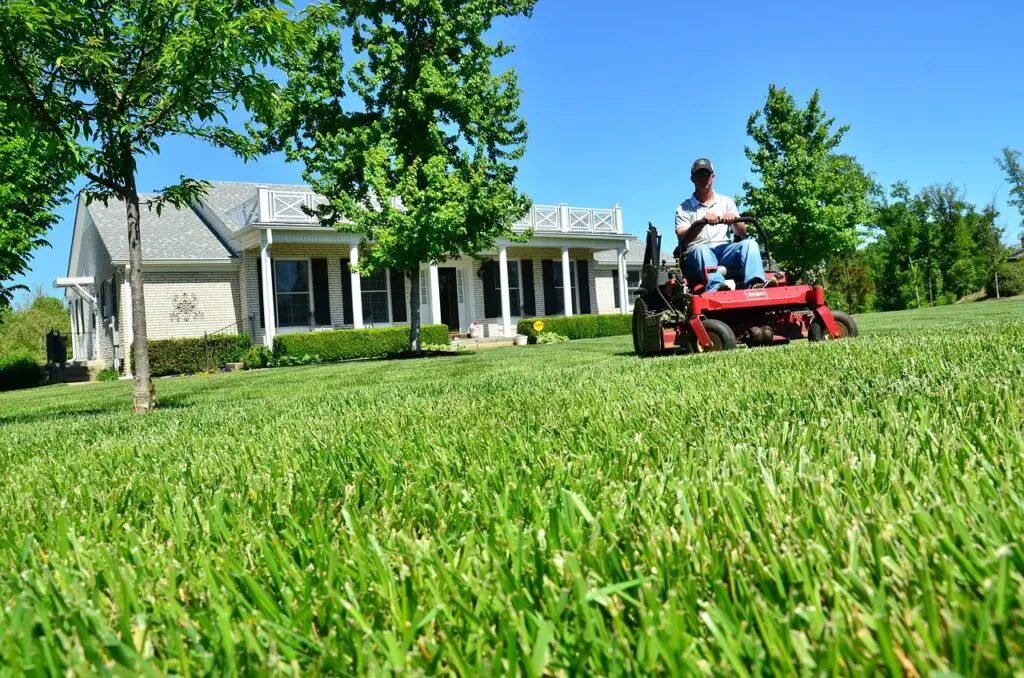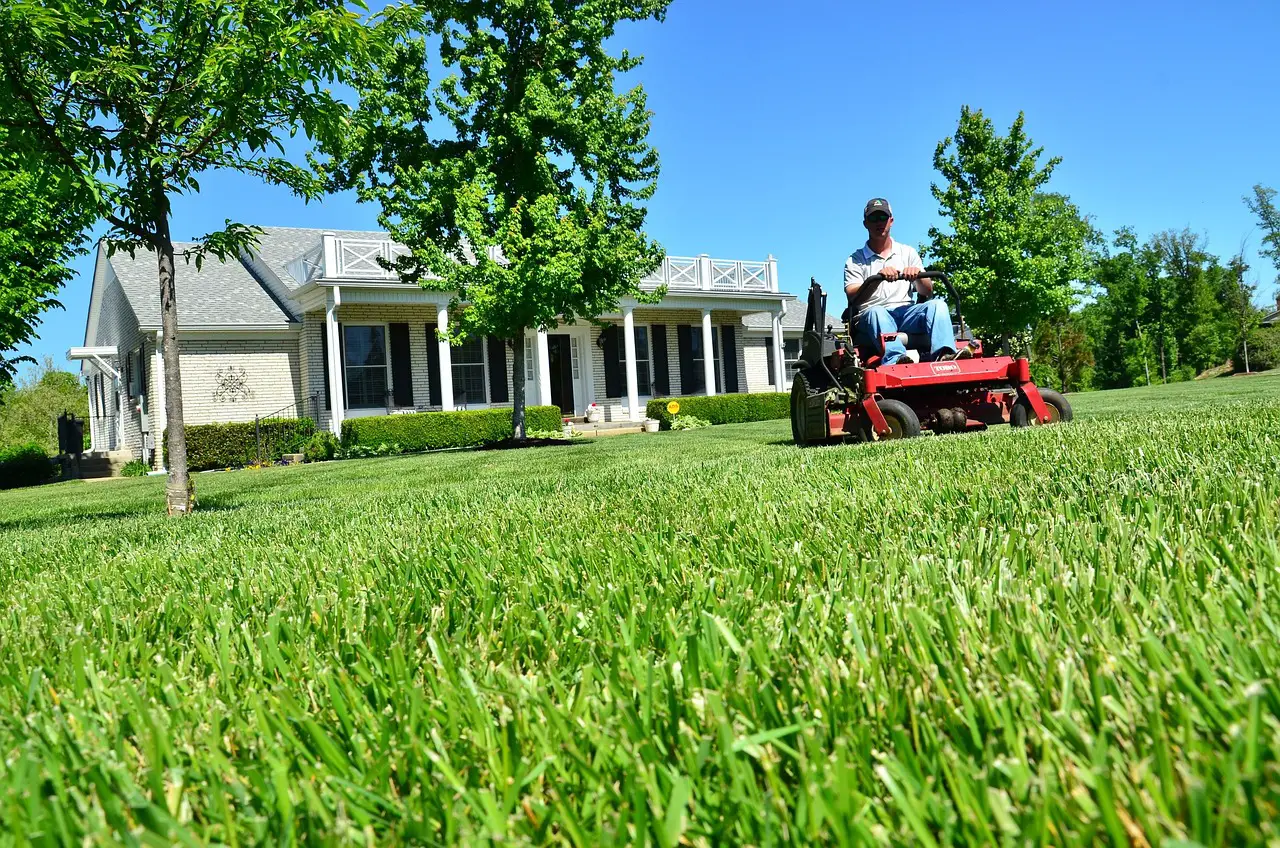Buying your first home is a significant milestone in your life, and having a lush green lawn to complement it is every homeowner’s dream. However, maintaining a healthy lawn requires some effort and knowledge, which can be challenging for new homeowners. In this guide, we will provide you with tips on lawn care, watering, fertilizing, and mowing to keep your lawn looking its best.

Watering
One of the most critical aspects of lawn care is watering. Newly installed lawns require more water than established ones to help the roots grow deep and establish a strong foundation. Watering should be done early in the morning or late in the evening to prevent evaporation and ensure the grass has enough moisture. Additionally, avoid overwatering your lawn, as it can lead to root rot and other diseases. Watering your lawn once or twice a week is generally sufficient, depending on your climate.
In addition to mowing and weed control, watering and fertilizing are two other essential aspects of lawn care. New homeowners may not be familiar with the proper techniques for watering and fertilizing their lawns.
When it comes to watering, it’s important to water deeply but infrequently. This means giving your lawn a good soaking once or twice a week, rather than watering it lightly every day. Deep watering encourages your lawn’s roots to grow deeper, which helps them better access water and nutrients in the soil. It’s also important to water in the morning or evening when temperatures are cooler and there is less evaporation.
Fertilizing
Fertilizing your lawn is essential to provide the necessary nutrients for your grass to grow healthy and green. A newly installed lawn requires fertilization every six to eight weeks during the growing season. Established lawns should be fertilized twice a year, once in the spring and once in the fall. Make sure to use a high-quality fertilizer that suits your lawn type and follow the instructions on the package carefully.
Fertilizing is also an important aspect of lawn care, as it provides the nutrients your grass needs to grow strong and healthy. However, it’s important to use the right type of fertilizer and apply it at the right time. Nitrogen is a key nutrient for grass, and most lawn fertilizers contain varying amounts of nitrogen, phosphorus, and potassium. Be sure to choose a fertilizer that’s appropriate for your lawn’s specific needs, and follow the manufacturer’s instructions for application.

Mowing
Mowing is an essential part of lawn care that involves cutting your grass at the proper height and frequency. Mowing your lawn regularly helps maintain its health and appearance. However, cutting your grass too short can weaken its roots and make it more susceptible to pests and diseases. The ideal grass length depends on the species of grass and the time of year. As a general rule, you should mow your lawn when the grass reaches one-third higher than its recommended height.
Weeds and Pests
Weeds and pests can damage your lawn and make it look unhealthy and unsightly. Preventive measures can help keep these problems at bay. Mowing your lawn regularly is one of the best ways to control weeds as it prevents them from developing seeds. Additionally, using herbicides can help control weeds if they are a persistent problem. As for pests, it is best to identify them early and use the appropriate control measures. Consult with your local gardening store or lawn care professional for advice on pest control.
Even with proper care, it’s not uncommon for lawns to develop issues such as brown spots, patches of dead grass, and pest infestations. New homeowners may not be sure how to identify and address these issues.
Brown spots on a lawn can be caused by a number of factors, including overwatering, underwatering, disease, or pests. To address brown spots, it’s important to identify the underlying cause and take appropriate action. For example, if the brown spots are caused by disease, you may need to apply a fungicide. If pests are the culprit, you may need to apply an insecticide.
Patches of dead grass can be caused by a variety of factors as well, such as pet urine, heavy foot traffic, or a lack of sunlight. To address these issues, it may be necessary to reseed or replace the affected areas of the lawn.
Pest infestations can also be a problem for lawns, with common pests including grubs, chinch bugs, and armyworms. Identifying the type of pest and using the appropriate treatment is key to addressing the issue and preventing future infestations.

FAQs:
Q: When is the best time to water my lawn? A: Water your lawn early in the morning or late in the evening to prevent evaporation.
Q: How often should I fertilize my lawn? A: A newly installed lawn requires fertilization every six to eight weeks during the growing season. Established lawns should be fertilized twice a year.
Q: How often should I mow my lawn? A: Mow your lawn regularly, but avoid cutting the grass too short.
Q: What can I do to control weeds and pests? A: Mowing your lawn regularly and using herbicides can help control weeds. Identifying pests early and using the appropriate control measures is essential to prevent damage to your lawn.
In conclusion, lawn care can be overwhelming, especially for new homeowners. However, by following these tips on watering, fertilizing, mowing, and controlling weeds and pests, you can maintain a healthy and beautiful lawn that complements your new home.

